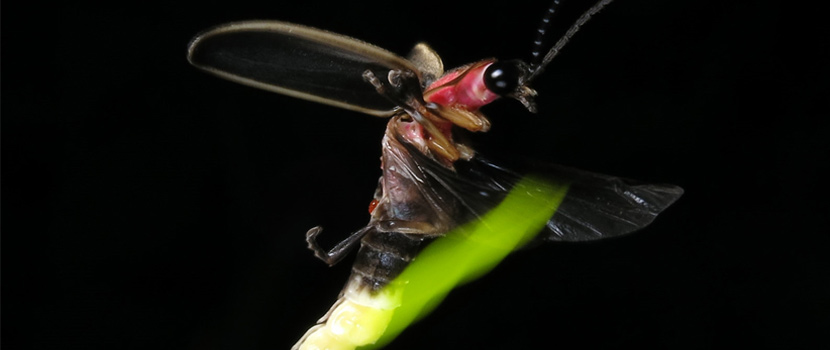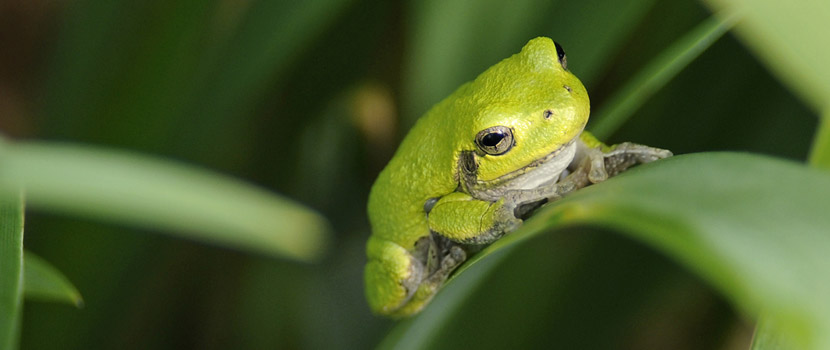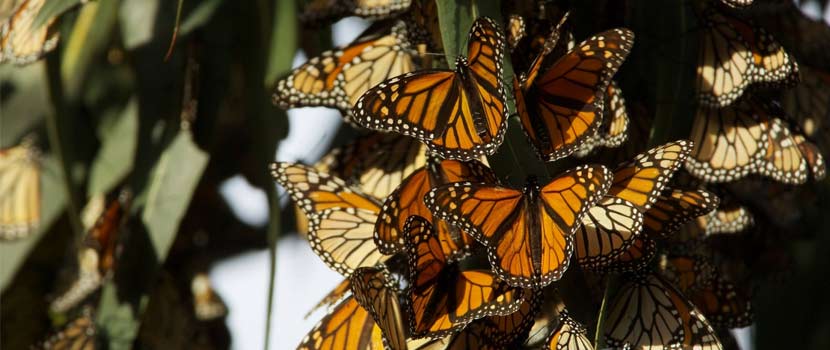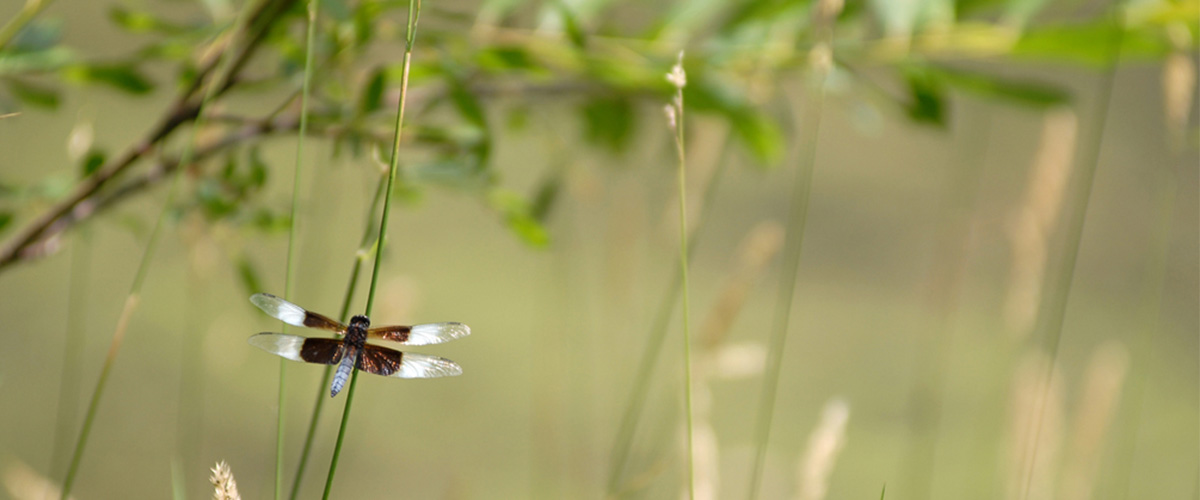
Summer is here and with it you likely have spent time near water — a local lake, pond, or river — which means you have also undoubtedly watched the aerial antics of dragonflies.
One of the most unique characteristics about dragonflies is that they live dual lives — their young are aquatic before transforming into the colorful, flying adults you see whizzing by. Read on to learn what happens and find more fun facts about dragonflies.
A Brief Introduction to Dragonflies
Dragonflies or "odonates,” are among the most ancient insects and were some of the first winged insects to evolve, about 300 million years ago. While modern dragonflies have wingspans of about two to five inches, fossil dragonflies have been found with wingspans of up to two feet!
But the real magic about these insects involves their life cycles. Dragonflies live near water for a purpose: their young are aquatic and they require water to complete their lifecycles.
Dragonflies undergo incomplete metamorphosis, which includes three stages of development (egg, larva and adult) unlike butterflies which undergo a four-stage, complete metamorphosis (egg, larva, pupa and adult.)
After the dragonfly egg hatches, the aquatic larva molts once and then starts hunting — eating almost any living thing smaller than itself! As the larva grows, it will molt numerous times until it matures into adulthood. Most dragonfly species mature into adulthood in one to three years, but some species of dragonflies can live in the water as a nymph (baby dragonfly) for over five years!
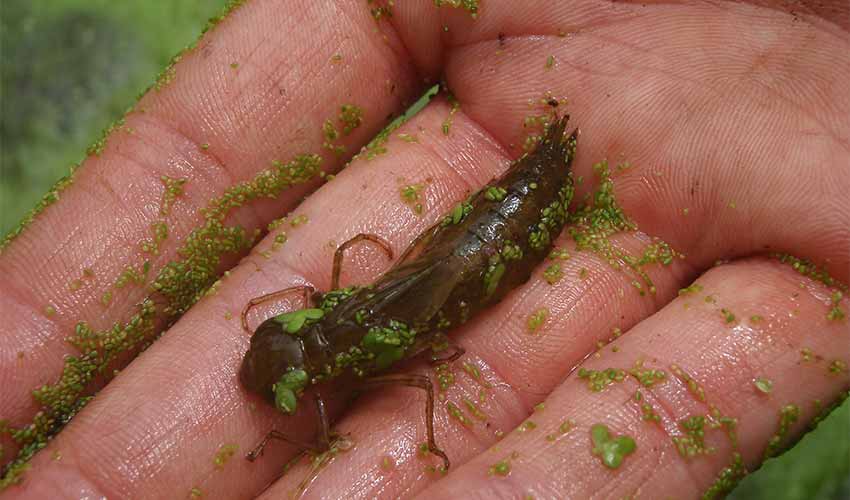
Fun Facts About Dragonflies
- Dragonflies are some of the world's most accurate hunters. If you think of a lion, they might catch their prey 2 out of 10 times. But a dragonfly catches their prey 9 out of 10 times! This is thanks to their large eyes that let them see almost 360 degrees around them. They are ravenous predators of flies and mosquitos, as well as any other insect they can catch.
- Dragonflies are amazing flyers. Their muscles are attached directly to their wings which allows them to fly faster than other insects. This also helps them be one of the most accurate hunters as they can fly forward, backward, and upside-down. They can also hover and pivot in place.
- Despite old stories and superstitions, dragonflies will not sew your lips shut if you tell a lie! They do not sting and they cannot hurt you.
- Dragonflies are very beneficial to ecosystems as a great food source for many other critters, such as fish, frogs, spiders, and birds.
Where to Find Dragonflies in Three Rivers
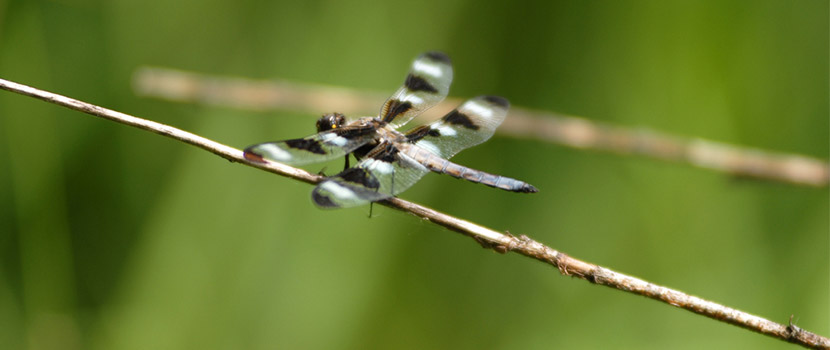
- The Mississippi River is a great place to see river species including some that are found nowhere else in the state. Dragonfly species you might see at the Mississippi Gateway Regional Park include the elusive clubtail, river jewelwing, American rubyspot, and russet-tipped clubtail.
- Crow-Hassan Park Reserve has some cool species due its proximity to the Crow River, in addition to its many prairie potholes. River species like the midland and plains clubtails use the prairie for upland habitat and can be found along with wide array of other species. A Crow-Hassan favorite is the male cobra clubtail with its thin and distinctively club-shaped abdomen.
- Carver Park Reserve has a small lake near the nature center called Dragonfly Pond! The park is full of lakes and ponds and it even has some tamarack swamps, a great habitat for seeking out dragonflies.
- Murphy-Hanrehan Park Reserve gives you a good chance near the metro area to see species that might not always migrate further north every year, like the red saddlebags. There are many great and diversified aquatic habitats at Murphy-Hanrehan to explore.
- Elm Creek Park Reserve was chosen as another great location because of the stream habitats found there. Rush and Elm creeks are home to the rare and beautiful plains emerald dragonfly and the iridescent ebony jewelwing. The prairie near the nature center is also an excellent upland habitat for many Odonata species.
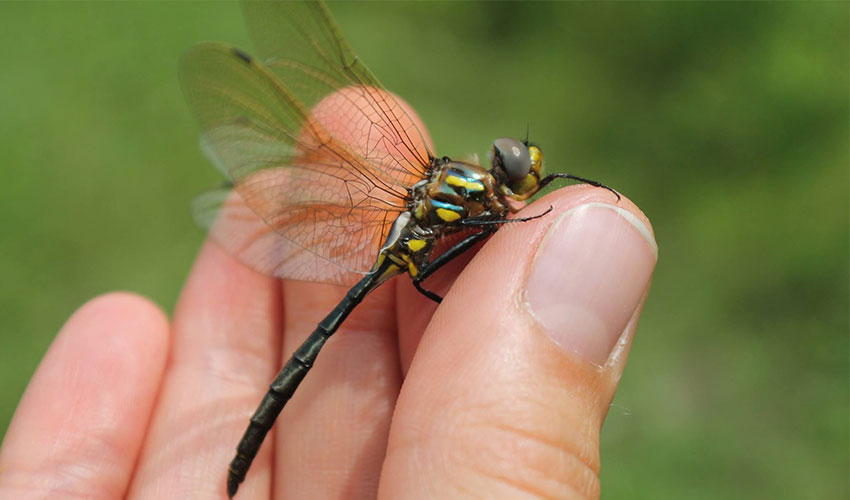
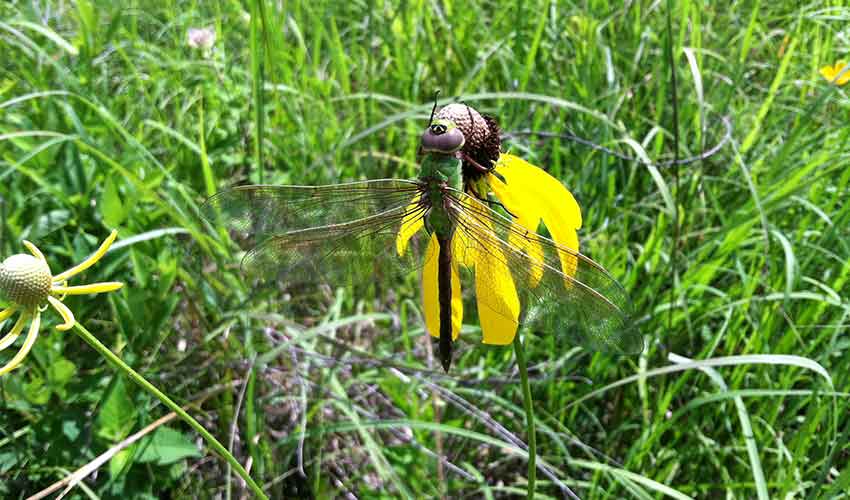
Want to get up close and personal with dragonflies? Visit Eastman Nature Center on July 20 for the Dragonfly Festival where you can catch adults and nymphs, test water quality and explore with a microscope.
Don’t forget to tune in to this month’s episodes of The Wandering Naturalist podcast to learn even more about dragonflies and visit Minnesota Dragonfly Society.
About the Author
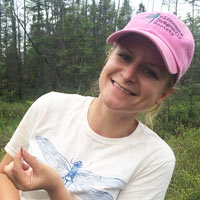
Angela graduated from Minnesota State University—Mankato with degrees in ecology and geography. She has a passion for being outdoors and ensuring conservation of the natural heritage of our lands. As a wildlife biologist at Three Rivers Park District, she enjoys working on a wide range of projects from restoring prairies to pollinator surveys. Outside of work she can be found in the garden where she is in the good company of wonder dog, Sid, and two rented chickens, Cersi Henister and Princess Leialot.
Related Blog Posts
Species Spotlight: The Magic of Fireflies
By: Miranda Jones
Fireflies evoke a sense of childlike wonder and delight. Learn what makes them glow, the threats to their population, and what you can do to protect them.
Frog Tongues — A Sticky Situation
By: Brandon Baker
The arrival of spring brings with it the call of frogs! Learn how these amazing creatures survive winter and find out the truth about frog tongues.
Pollinators: The Great Monarch Migration
By: Elaine Tucker
Have you ever wondered what a monarch tag is or why we tag monarch butterflies? Read on to discover more about these beautiful insects and their incredible 2,000-mile migration.
